Coronavirus will change America forever. Past crises offer hints of what's to come.
John Haltiwanger

- The coronavirus pandemic has already changed the US in major ways. Like other crises the country has faced, it will alter the nation in irrevocable ways.
- All historic crises have byproducts that ripple through time. Celebrations for World War I's end exacerbated the Spanish flu pandemic. World War II would lead to the mass production of penicillin, the first antibiotic.
- With nearly over 45,000 already dead in the US and millions unemployed in a matter of weeks, the crisis is pushing Americans to embrace new perspectives about the safeguards the country should have in place — including universal health care — in case something of this magnitude strikes again.
- Visit Business Insider's homepage for more stories.
The legacy of the coronavirus pandemic, if written today, would be the unspeakable tragedy of hundreds of thousands of dead worldwide, major cities under lockdown, millions suddenly out of work, the largest economic stimulus package in US history, and the heroic sacrifices of health care workers.
And it would be impossible to tell this story without discussing the ways in which President Donald Trump left the US utterly unprepared. As coronavirus spread across China and into other countries, Trump ignored myriad warnings of an impending public health and economic catastrophe. He spent weeks downplaying the threat, assuring Americans he had everything under control even as his administration struggled to develop effective tests needed to diagnose and treat the infected.
The US is now the epicenter of the pandemic. There will be more to the story than the sheer number of people killed by the virus, the economic catastrophe it induced, and Trump's bungled handling of the pandemic.
All historic crises have byproducts that ripple through time. Some are predictable, some are utterly unexpected. Celebrations surrounding the end of World War I exacerbated the Spanish flu pandemic in the US. World War II would lead to the mass production of penicillin, the first antibiotic. The Great Recession fostered enhanced financial protections for Americans. The 9/11 terror attacks catalyzed the longest war in US history.
This pandemic will also change society in irrevocable ways.
With nearly over 45,000 already dead in the US and millions unemployed in a matter of weeks, the crisis is pushing Americans to embrace new perspectives about the safeguards the country should have in place — including universal health care — in case something of this magnitude strikes again.
And as New Yorkers gather at their windows each night at 7 pm to cheer for frontline health care workers, it's also possible this crisis — as depressing and draining as it's been — will inspire a new generation of doctors, nurses, and scientists.
The pandemic is exposing many of America's flaws, particularly the dangers of hubris and the toxicity of the movement against science. It's raising questions about the status of the US as a global power.
And there are rising concerns that public health tracking by the government will cause constitutional debates down the line. Much like the 9/11 terror attacks, coronavirus has sparked a new debate regarding the tradeoffs between liberty and security.
At the moment, it's impossible to know where this crisis will lead. The US does not yet have a robust system of testing in place for the virus, meaning the country lacks a full picture of the scale of the outbreak within its borders. But we can gain perspective on where this road might take us, and maybe even find hope, by examining the ways America changed in earlier crises.
Read the original article on Business InsiderThe Great Recession (2007-2009)
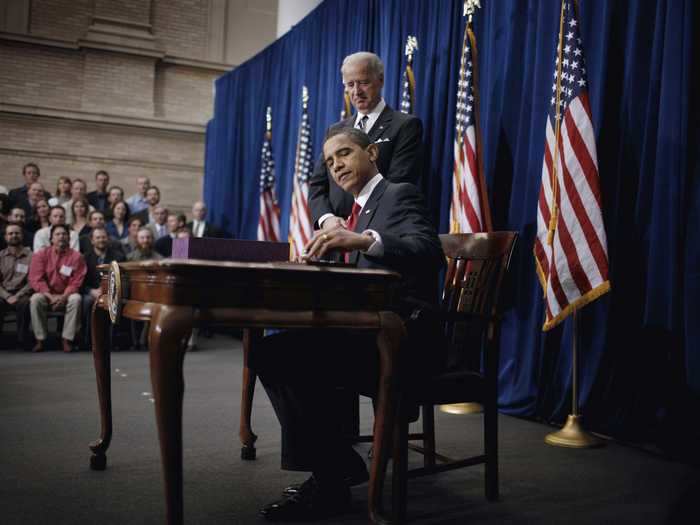
The Great Recession was the worst economic disaster the US faced since the Great Depression. It crippled an entire generation financially, saw businesses shutter, and pushed people out of their homes. The causes continue to be debated, and the detrimental impact of the crisis continues to be felt by many Americans. The Obama administration instituted policies that put the US on the road to recovery, but coronavirus threatens much of that progress.
Consequences of the 2008 financial crisis:
- Unemployment reached 10% in 2009 and Americans lost $9.8 trillion in wealth.
- Real gross domestic product (GDP) declined by 4.3% from the onset of the recession in December 2007 to its official end in June 2009.
- The nation elected its first black president, Barack Obama, in the midst of the Great Recession.
- The recession lasted 18 months, ending after massive government stimulus packages.
- This included a $700 billion bailout of the financial industry (signed by President George W. Bush) and an $800 billion economic stimulus package signed by Obama.
- Much like the Great Depression, the Great Recession led to new, sweeping financial regulations.
- Obama signed Dodd-Frank Wall Street Reform and Consumer Protection Act in 2010, which aimed to limit risky behavior on Wall Street and protect consumers from being exploited by payday lenders and mortgage companies.
- Obama's massive economic stimulus package was ultimately successful in giving the economy a boost.
- GDP growth was higher from 2009-2012 in part due to the legislation, according to a Congressional Budget Office report.
- Obama's stimulus packages also added a substantial amount of money to the federal debt, though it helped put the nation back on track economically. According to Department of Treasury data and Congressional Budget Office projections, the national debt grew 84% under Obama's watch by the end of fiscal year of 2016 — slightly more than it had under Bush at 75%.
- Obama inherited an economic calamity, with the unemployment rate at nearly 8% in January 2009 as Bush left office. It continued to go up in the early part of Obama's first term, peaking at 10% in October 2009. But it began to fall in 2011 and continued to for the rest of Obama's presidency.
- President Trump took office as the economy continued its recovery — and as it underwent a decade-long expansion, the longest in American history. The current employment rate stood at 3.5% as of December 2019 - the lowest in a half-century.
- The Great Recession destroyed millions of jobs per quarter, but as of January 2020 the economy had steadily added around 200,000 jobs per month since President Obama's second term.
- The stock market hit its bottom early in Obama's first term, but mostly increased in the years that followed and into the early part of Trump's first term.
Joseph Zeballos-Roig and Andy Kiersz contributed reporting.
The 9/11 terror attacks and the global war on terror (2001-present)
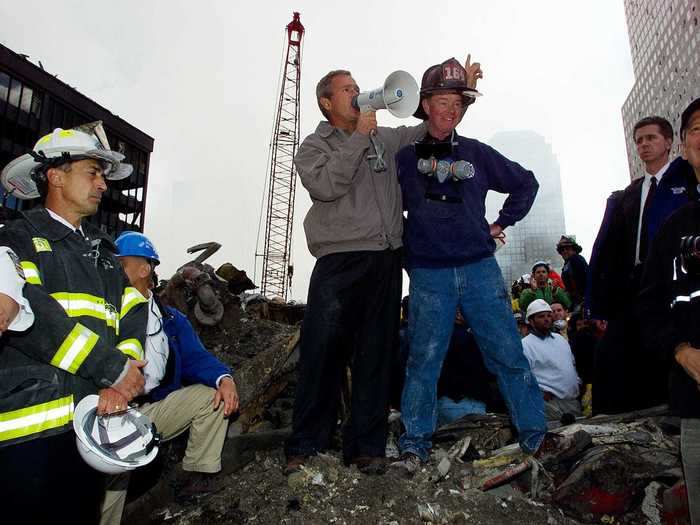
The 9/11 terror attacks sent shockwaves through the US and the wider world. They catalyzed a global war on terror, which continues despite mounting evidence it's been a costly failure. Though the attacks themselves unified Americans in an inspiring way in the days that immediately followed, they also led the US government to take actions many feel violated the purported values of the country.
Consequences of the 9/11 terror attacks:
- On September 11, 2001, terrorists hijacked commercial airplanes and flew them into the World Trade Center in New York City as well as the Pentagon in Virginia. Another plane that was hijacked crashed in Pennsylvania after passengers fought against the hijackers.
- A total of 2,977 people were killed.
- First responders have suffered from an array health issues that are believed to be linked to toxins inhaled during the cleanup and rescue efforts.
- After the attacks, the US established the Department of Homeland Security in 2002.
- The terror attacks led the US to invade Afghanistan in October 2001.
- The legal justification for the invasion, the 2001 Authorization for Use of Military Force, has been loosely interpreted to effectively grant presidents carte blanche to wage war across the globe — it has been used by three presidents to justify dozens of operations in 19 countries.
- In 2003, the US invaded Iraq under the baseless (and disproven) notions that its leader, dictator Saddam Hussein, had weapons of mass destruction and close ties to Al Qaeda (the terror group responsible for the 9/11 attacks).
- It was a unilateral invasion that took place without widespread global support — the United Nations said the invasion was illegal.
- The invasion contributed to the rise of the Islamic State or ISIS, a terror organization the US has been fighting since 2014.
- During the so-called war on terror, which is ongoing, the US has tortured people, engaged in mass surveillance, and conducted extrajudicial killings (including US citizens).
- As a result of the US's post-9/11 activities, at least 800,000 people have been killed by direct war violence in Iraq, Afghanistan, Syria, Yemen, and Pakistan, according to the Cost of War Project.
- The US federal government has spent or obligated $6.4 trillion dollars on the wars in Afghanistan, Pakistan, and Iraq through fiscal year 2020, according to the project.
- Though the US has not experienced another terror attack on the scale of 9/11, many questions have been raised as to whether the US response was disproportionate and exacerbated the problems it sought to alleviate.
Vietnam War (1954-1975)
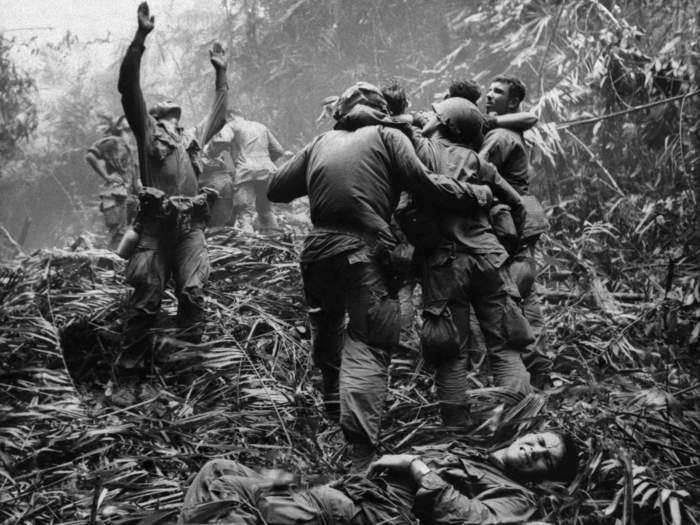
The Vietnam War was a byproduct of the colonial era and the Cold War. The US entered the war to prevent Vietnam from becoming a communist nation. It failed, and the war stood as a major embarrassment for the US on the global stage. Domestically, the war contributed to anti-government fervor and unrest amid the Civil Rights Movement and the counterculture movement. The war was a knock to US confidence, and changed the way the country looked at itself. Meanwhile, much of the world looked at the US as an imperialist bully.
Consequences of the Vietnam War:
- Nearly 60,000 Americans were killed in the war, in which the US fought on behalf of the anti-communist government of South Vietnam.
- It's also estimated somewhere between 2.1 million to 3.8 million Vietnamese civilians and soldiers were killed on both sides during the US involvement in the war (and related conflicts before and after).
- The US was involved in atrocities in Vietnam, and also dropped bombs on the neighboring country of Laos and invaded Cambodia during the war. Unexploded bombs dropped on Laos continue to kill people many years later.
- By the time Saigon surrendered in 1975, the US had spent $141 billion in Vietnam over the course of 14 years. This contributed to economic troubles at home, which were exacerbated by the 1973 oil crisis.
- The US became increasingly involved in Vietnam in the 1950s as it broke away from French colonial rule. But its military presence really began to grow in the 1960s, growing to roughly 9,000 personnel by 1962. Within six years, there would be roughly half a million US troops in the country.
- Though there was initially public support for the war, more and more Americans turned against it over time. It contributed to significant unrest at home, with young people across the country protesting against the conflict and the draft.
- Famous figures like boxer Muhammad Ali refused to be drafted. Young Americans burned their draft cards, and roughly 100,000 fled to Canada. President Jimmy Carter later pardoned draft dodgers.
- The Ohio National Guard opened fire on unarmed students at Kent State University in Ohio in 1970 during an antiwar protest, killing four. This ignited the antiwar movement.
- Over half a million US military personnel deserted between July 1966 and December 1973.
- The war occurred in concert with the hippie and counterculture movement, fostering one of the richest eras of art and music the country has seen while producing one of the most progressive generations in US history.
- A monument to those who were killed in the war was erected in Washington, DC. It was completed in 1982.
The Cold War (1946-1991)
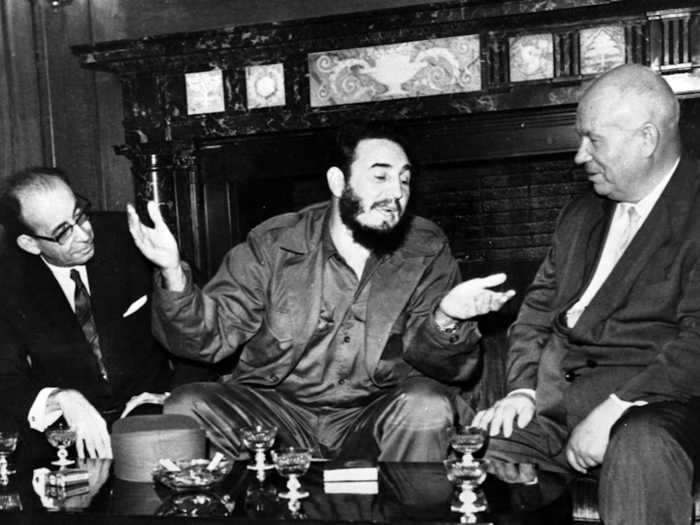
The US and Soviet Union emerged from the horrors and devastating of World War II as the most powerful countries in the world. Though they'd been allies in the fight against the Axis, the two superpowers would go on to spend the next half century competing for influence in every corner of the world. It was not a hot war, as they never engaged one another directly, hence this epic battle for hegemony was dubbed the "Cold War."
The consequences of the Cold War:
- The Cold War created a bipolar world, pushing the globe away from an era of European dominance, in which the US and USSR reigned supreme.
- Both sides intervened in other countries, engaged in an arms race, and frequently flexed their military muscles during the rivalry.
- The Soviets were extremely repressive, with strict limitations on civil liberties. The US portrayed itself as a more benevolent nation and champion of democracy, even as state-sanctioned racism and Jim Crow persisted.
- The Soviet Union sought to spread communism across the globe, bringing many countries into its sphere of influence.
- The Soviet empire included 15 Soviet Socialist Republics: Russia, Armenia, Azerbaijan, Belorussia (present-day Belarus), Estonia, Georgia, Kazakhstan, Kirgiziya (present-day Kyrgyzstan), Latvia, Lithuania, Moldavia (present-day Moldova), Tajikistan, Turkmenistan, Ukraine, and Uzbekistan.
- There were also Soviet satellite states, or countries that were formally independent but heavily under the influence of Moscow, in Eastern Europe.
- At its height, the USSR occupied roughly 16% (one-sixth) of the world's surface.
- Meanwhile, the US sought to prevent communism from spreading wherever it could, which often led it to prop up dictators who served American interests.
- Across the world, especially in Latin America, the US inserted itself into the affairs of other countries, in some cases staging coups to push out socialist leaders. These subversive activities continue to impact many countries across the world, and have contributed to anti-American sentiment in some places.
- The US was paranoid about the spread of communism, believing that if one nation adopted a communist system it would create a chain reaction and spread to neighboring countries. This was known as the Domino Theory, which led to a policy of "containment," and it helped catalyze Korean War and the Vietnam War.
- Paranoia about communism also infected the US domestically, exemplified via Sen. Joseph McCarthy's search for communist sympathizers in a period known as the "Red Scare." FBI Director J. Edgar Hoover, a fervent anti-communist, assisted in and expanded on these efforts. This led to erosion of civil liberties, particularly free speech.
- The Cold War created widespread anxiety about a nuclear holocaust after the Soviets successfully tested a nuclear bomb in 1949.
- The fear was never higher than during the Cuban missile crisis of 1962, after the Soviets placed nuclear-armed missiles in Cuba. Cooler heads ultimately prevailed and the Soviets agreed to remove the missiles if the US agreed not to invade Cuba (in 1961 the CIA orchestrated a failed operation to overthrow Fidel Castro, known as the Bay of Pigs invasion).
- The Cuban missile crisis was one of the most tense moments in world history and the reason for an ongoing US economic embargo against Cuba.
- The fear was never higher than during the Cuban missile crisis of 1962, after the Soviets placed nuclear-armed missiles in Cuba. Cooler heads ultimately prevailed and the Soviets agreed to remove the missiles if the US agreed not to invade Cuba (in 1961 the CIA orchestrated a failed operation to overthrow Fidel Castro, known as the Bay of Pigs invasion).
- The US established the Central Intelligence Agency (CIA) in 1947, largely to gather intelligence on the Soviets and their allies. Its Soviet counterpart was the Komitet Gosudarstvennoy Bezopasnosti, known as the KGB.
- The US, along with 11 of its Western allies, established the North Atlantic Treaty Organization (NATO) in 1949.
- NATO was founded upon the notion of collective defense, meaning an attack on one member was considered an attack on all.
- Though NATO's mission has been expanded in the present-day, it was originally established as a Western military alliance against the USSR.
- The Soviet counterpart to NATO was a military alliance under the Warsaw Pact.
- The era was also characterized by rapid technological advances, as both superpowers did their utmost to outdo the other.
- The Cold War saw the Soviets launch the first artificial satellite (Sputnik) and the US put a man on the moon as Washington and Moscow moved their competition for dominance beyond the world itself during what was known as the "Space Race."
- The era also led to the creation of the Internet. In its early days, it was designed to be a means of communication for the US government in case of a Soviet attack (and concerns the Soviets would take out America's telephone/communication system).
World War II (1939-1945)
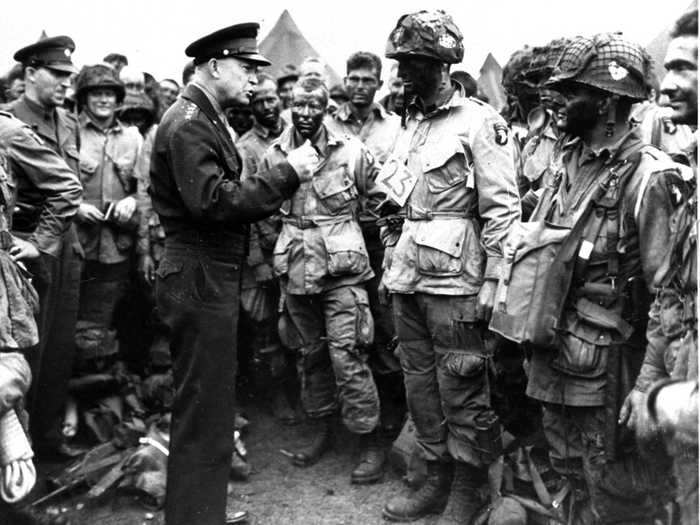
Though World War I was supposed to be the "war to end all wars," another global conflict began roughly 20 years after it ended with Germany's invasion of Poland in 1939. The US, still reeling from the Great Depression, was wary of getting involved. But after it was attacked by the Japanese Empire at Pearl Harbor on December 7, 1941, that quickly changed. World War II transformed the US into one of the world's most powerful nations, while fostering massive advances in technology and changes in the international system.
The consequences of World War II:
- Roughly 405,000 Americans were killed during World War II (291,557 died in battle).
- It's estimated the conflict led to somewhere between 35 to 60 million deaths globally (some estimates place the death toll as high as 85 million).
- The Allied powers (Great Britain, France, the Soviet Union, and China) defeated the Axis powers (Germany, Japan, and Italy).
- The Nazis killed six million Jewish men, women, and children during the Holocaust, a horrific genocide that continues to haunt the world and inform discussions on the conduct of nations in armed conflict.
- The Nazis also targeted and killed people in other groups, including Roma, the disabled, Slavic people, homosexuals, communists, and others.
- The Holocaust ended with the defeat of the Nazis in 1945.
- A series of trials, aiming to bring Nazi war criminals to justice, were held in Nuremberg, Germany, beginning in 1946.
- The trials set important precedents for international law, particularly in relation to war crimes and genocide, and serve as vital source of documentation pertaining to the worst war the world has ever seen.
- The war marked the first and only time nuclear weapons were used during combat, when the US dropped atomic bombs in August 1945 on the Japanese cities of Hiroshima and Nagasaki.
- The war inspired the Manhattan Project, an American-led effort to develop a functional atomic weapon. The successful project laid the foundations for future developments in nuclear weaponry, but also nuclear energy.
- President Harry S. Truman in 1946 founded the Atomic Energy Commission to "manage the development, use, and control of atomic (nuclear) energy for military and civilian applications."
- Beyond nuclear tech, the war fostered numerous other innovations, including but not limited to: the mass production of penicillin (one of the first antibiotics), the first flu vaccine, and the first large-scale electronic computer.
- The war also led to innovations in radar, the popularization of plastics, and the creation of the Voice of America radio network.
- The war led to the creation of the United Nations, which the US was instrumental in founding, in an effort to promote global cooperation and prevent war. Decades later, it still plays a central role in foreign affairs.
- The atrocities committed during World War II led to the world to carefully consider international law in relation to armed conflict.
- After the war, the US and the USSR (Soviet Union) emerged as the greatest powers in the world. Though they were allies during the conflict, the end of the war marked a new era in which the two superpowers competed for influence across the globe. This was known as the Cold War.
- The Allied forces (led by the US) occupied Japan from the end of the war until 1952. During that time, Japan adopted a pacifist Constitution.
- The US still has military bases on the Japanese island of Okinawa, which continues to cause tensions with locals and the government of Japan.
The Great Depression (1929-1939)
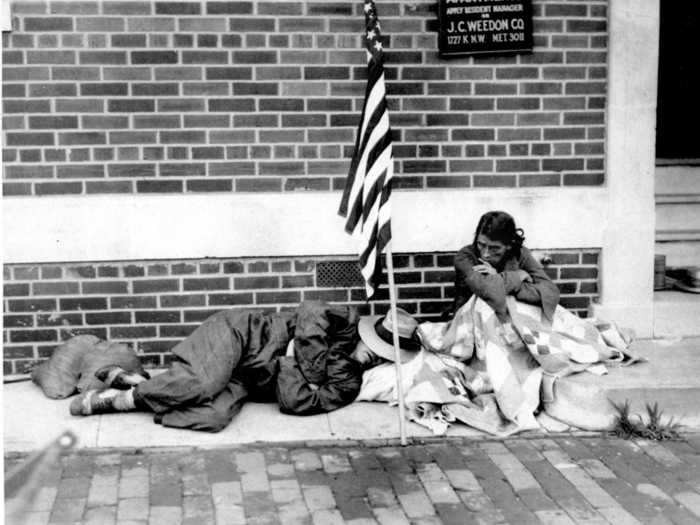
The Great Depression was the worst economic calamity in the history of the modern world, beginning with the stock market crash in October 1929. It was a devastating era that pushed many Americans into poverty and shook the confidence of the nation. The US did not fully emerge from it until World War II, which mobilized the country in unprecedented ways and morphed it into a superpower.
The consequences of the Great Depression:
- The unemployment rate reached well over 20% at the height of the Great Depression, while banks failed and businesses across the country closed at an astronomical rate.
- Americans lost hope. They'd been taught to tie hard work to success. But during the depression, there was hardly any work to be found and 15 million were unemployed at the worst point of the crisis in 1933.
- Bread lines became a common scene in the US, alongside huge numbers of homeless people as many were evicted from their homes. Homeless people set up shantytowns, which became known as "Hoovervilles," in reference to President Herbert Hoover.
- People panicked and withdrew all of their money as 9,000 banks failed during the depression, eliminating the life savings of millions of Americans.
- Industrial production fell roughly 47% in the US between 1929 and 1933, while Gross Domestic Product declined by 30%.
- Hoover told Americans the crisis would quickly pass, and pushed against a broad, federal response. Hoover was deeply unpopular. Consequently, Franklin Delano Roosevelt (FDR) won a landslide victory in 1932.
- FDR filled the nation with a sense of optimism. In his first inaugural address, Roosevelt famously stated, "The only thing we have to fear is fear itself."
- FDR was one of the most influential presidents in US history, completely reshaping the role of the federal government in the lives of Americans with his "New Deal," a major series of programs and policies aimed at pulling the country through the darkness of the depression.
- In his first 100 days, FDR took sweeping actions to address the economic crisis, including stabilizing the banking system with the Emergency Banking Relief Act.
- With the Glass-Steagall Act of 1933, FDR established deposit insurance and prevented banks from doing business with both Main Street and Wall Street (it separated commercial banking from investment banking).
- The law, formally known as the Banking Act of 1933, was repealed in 1999. This move has been pointed to in recent years by some present-day lawmakers like Sen. Bernie Sanders as one of the causes of the 2008 economic crisis.
- Roosevelt also got Congress to end prohibition by the end of his first year in office, via the ratification of the 21st Amendment. That meant Americans could (legally) produce and drink alcohol again.
- FDR also took the US off of the gold standard in 1933, which effectively meant the value of the country's currency was no longer pegged to gold. This ultimately helped boost the economy, and played a major role in the US emerging from the crisis.
- In 1935, Roosevelt created the Works Progress Administration (WPA) with an executive order to help unemployed people get jobs in public works projects, such as roads, public buildings, parks, bridges, and airports. The work-relief program ended up employing 8.5 million people.
- The New Deal reshaped the face of America in many ways with initiatives like the Rural Electrification Administration, which brought electricity to rural areas in the US.
- Similarly, the state and national parks system in place across the US today was shaped by the Civilian Conservation Corps. The CCC was a work relief program established in 1933 that provided jobs to primarily unmarried men, employing roughly three million people overall from it onset until 1942.
- FDR also established unemployment insurance via the Social Security Act of 1935, which established a permanent, national pension system for the elderly. The legislation set up a safety net for a huge number of disadvantaged Americans.
- In the midst of the Great Depression, the worst drought in modern US history hit the Great Plains. It was known as the Dust Bowl and it led roughly 2.5 million to leave the region (200,000 went to California), marking the largest migration in US history.
- The US began to see the light at the end of the tunnel toward the end of the 1930s, but by that point there were fears of another world war. The conflict, which began in 1939, was the beginning of a new chapter for the US, thrusting it to the forefront of global leadership.
The Spanish flu of 1918 (1918-1919)
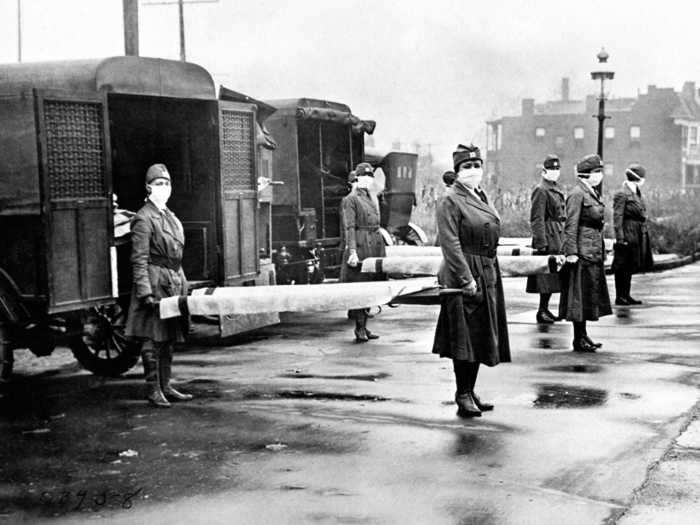
In the final year of World War I, the deadliest pandemic in history — the Spanish flu of 1918 — killed more people that the conflict itself. The US, distracted by the war, was hit hard. Many American cities issued strict guidelines, including banning gatherings and ordering people to wear masks, that helped quell the spread. Cities that didn't take the flu seriously were especially devastated by the 1918 pandemic.
The consequences of the 1918 Spanish flu:
- It's estimated about one-third of the world's population became infected with the Spanish flu, or roughly 500 million people. The flu swept across the globe in three waves, and did not dissipate until well into 1919.
- At least 50 million people died worldwide, including 675,000 in the US, according to the Centers for Disease Control and Prevention (CDC), and the pandemic lowered the average life expectancy in the US by more than 12 years.
- Almost no one escaped the impact of the flu, including healthy and young people. Even President Woodrow Wilson reported suffered from it while negotiating the Treaty of Versailles (which formally ended World War I).
- The origins of the pandemic are disputed, but troop movements and overcrowding helped it spread across the world over the course of 1918 and 1919.
- The pandemic gained its name because Spain was neutral in World War I, and therefore did not have the same type of wartime censorship on news as participating countries. The Spanish press publicized the spread of the flu heavily, fostering an association between the pandemic and Spain.
- There's no explicit evidence that the pandemic originated in Spain, nor is there evidence that Spain was hit especially harder than the rest of Europe.
- The Spanish flu first popped up in the US among service members at a Kansas army base in March 1918. But the war was a major distraction from the outbreak and public health officials in the US downplayed the threat, which contributed to its spread.
- The war also meant that there was a major shortage of professional nurses, which did not help matters.
- The end of the war meant soldiers returning home and big celebrations, which exacerbated the pandemic in the US.
- There was no vaccine or treatment for the Spanish flu, and the only effective way to mitigate the spread was through "non-pharmaceutical interventions such isolation, quarantine, good personal hygiene, use of disinfectants, and limitations of public gatherings, which were applied unevenly," according to the CDC.
- With the federal government focused on the war effort, it was up to cities to implement measures to quell the spread of the flu.
- Chicago and other cities closed theaters, movie houses, and night schools, while barring public gatherings.
- New York City added the flu to the list of reportable diseases and issued orders for all flu cases to be isolated at home or in a city hospital.
- San Francisco ordered people working in a public capacity to wear masks, and recommended all people wear them if appearing in public.
- Studies have shown that cities that took the threat of the 1918 flu seriously fared much better than those that took a lax approach.
- In late September 1918, Philadelphia held a parade to raise money for the war effort. Consequently, every bed in the city's 31 hospitals was full within 72 hours and roughly 2,700 Philadelphians had died by October 5.
- Due to concerns over the flu, St. Louis decided to cancel a similar parade for the war effort around the same time. Over the course of the next month, 10,000 people died in Philadelphia while St. Louis' death toll didn't rise above 700, according to the CDC, which cited this "deadly example" as evidence of the benefits of social distancing and cancelling mass gatherings during pandemics.
- It's estimated the Spanish flu killed 195,000 Americans during October alone, according to the CDC. This was the final month of the war (the fighting ended on November 11, 1918).
World War I (1914-1917)
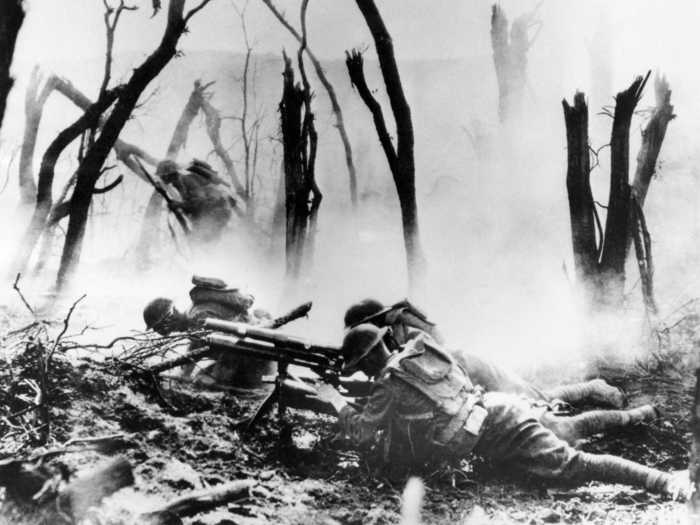
The US entered World War I in 1917, years after fighting erupted in Europe, and held off on getting involved until public sentiment began to shift after the sinking of the Lusitania passenger ship by a German U-boat and the infamous Zimmerman Telegram. But the bloody conflict still scarred a generation of Americans, and set the stage for World War II to occur barely two decades later.
The consequences of World War I:
- Over 116,000 US service members were killed in World War I, including over 53,000 in battle. There were nearly 40 million casualties worldwide.
- The war left many soldiers with what was known as "shell shock" at the time. Today, we refer to this as Post-Traumatic Stress Disorder (PTSD).
- Congress voted to declare war against Germany in April 1917. It was only the fourth time the US had voted to declare war in its history. In doing so, the US reinstituted the draft and greatly expanded the size of its military.
- A system of conscription was introduced after Congress passed the Selective Service Act in May 1917. Roughly 2.8 million men were drafted into the US armed forces as a result.
- The US mobilized over 4 million people in total over the course of the war (there were roughly 4.7 million service members worldwide).
- Many historians argue that if the US not entered the war then Germany would've won.
- America's entry into the war did not only mean it sent soldiers to fight and die, it also led to a massive economic contribution: the US loaned roughly $7 billion to the Allies from 1917 to the end of the conflict.
- The war led to many technological innovations, and saw new weapons introduced on the battlefield: tanks, poison gas, drones.
- The war also led to the introduction and widespread implementation of Daylight Saving Time, among other societal changes (including popularizing wristwatches and the zipper).
- The conflict also changed aviation forever, as it was the first time powered aircraft were widely used in warfare.
- The war led President Woodrow Wilson to propose the League of Nations, the precursor to the United Nations. The US never joined because of isolanist lawmakers, and the organization failed to prevent another world war.
- In the years that closely followed the end of the war, the US saw a wave of social changes, including women's suffrage in 1920.
- The end of the war also led to the collapse of major empires that had ruled over regions for centuries, including the Ottoman Empire.
- This led Western powers to partition the Middle East. But they largely ignored the region's complexities and the map they drew would end up inciting and inflaming divisions that continue to trouble the Middle East (and US interests there) to this day.
The Civil War (1861-1865)
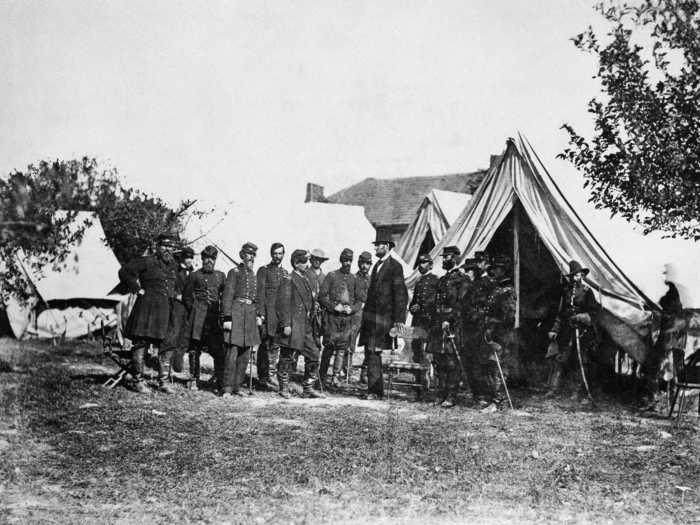
The Civil War continues to stand as the bloodiest conflict in US history. The conflict nearly destroyed the nation, and continues to incite divisions in the present day. Southern states seceded amid a national debate over slavery, in an effort to perpetuate the enslavement of their fellow humans and in rebellion of the federal government. The South (the Confederacy) ultimately lost to the Union.
The consequences of the Civil War:
- It's estimated between 618,000 to 750,000 Americans were killed during the war.
- The death toll shook America to its core, and led to the establishment of a network of federal cemeteries (such as Arlington National Cemetery).
- The war resulted in the end of the slavery in the US, which was solidified in legal terms via the 13th Amendment to the US Constitution.
- The war also led to the 14th Amendment (ratified in 1868), which guaranteed all citizens "equal protection of the laws." It also granted citizenship to all persons born or naturalized in the United States, which included ex-slaves.
- Additionally, the war led to the 15th Amendment (ratified in 1870), which granted African-American men the right to vote.
- The end of slavery did not mean an end to racism in the US, nor did it result in the cessation of the state-sanctioned or legalized oppression of people of color.
- In the years following the war, Southern states would move (via both legislation and various forms of intimidation) to bar black people from voting while instituting de jure segregation or the separation of races by law. These restrictive, racist laws were known as "black codes."
- The laws and practices meant to disenfranchise and segregate black Americans were collectively known as Jim Crow. They were not eradicated until the Civil Rights Act of 1964 and the Voting Rights Act of 1965, but the legacy of Jim Crow lived on and people of color continue to face obstacles to voting in the present day.
- In the decades that followed the Civil War, particularly in the early years of the 20th century, the history of the conflict was essentially rewritten nationwide to portray the Confederacy not as traitorous army fighting to perpetuate slavery, but as a band of heroic soldiers battling against northern aggression.
- This whitewashing of history, often referred to as the "Lost Cause of the Confederacy," led monuments to Confederate generals and soldiers to be erected in cities nationwide.
- In recent years, there's been a growing public debate over whether it's appropriate to publicly memorialize leaders of an army that fought in favor of slavery, and many cities have begun to take such monuments down.
- There's also been a debate over the Confederate flag and whether it's a symbol of heritage, as proponents of the displaying the flag claim, or a symbol of hate.
- The Civil War did not just change American society, it also changed the way conflicts were fought and recorded.
- It was the first war that had widespread newspaper coverage, and the first time the telegraph and railroads played big roles in a conflict (these advances in technology made it possible for the relatively rapid dissemination of information). In some cases, those reporting on the frontlines would learn of family members killed in battle (including their own children) as they documented the carnage.
- It was also the first war in which ironclad warships, a machine gun (the Gatling gun), and submarines were employed.
The Revolutionary War (1775-1783)

The Revolutionary War led to the establishment of a country that would grow to become the most powerful, wealthy nation on the planet in the course of roughly 160 years. The Continental Army defeated the world's greatest empire at the time, sending shivers down the spines of monarchs across Europe.
The consequences of the American Revolution:
- 4,435 US service members died.
- The US was established as an independent nation, and it continues to stand as the world's oldest democracy.
- The Revolutionary War gave rise to the US government and its three branches (legislative, executive, judicial), and the US Constitution.
- Gen. George Washington, who led the Continental Army against the British, became the nation's first president.
- He set the standard for future leaders of the nation as not only the head of government but also the head of state. In other words, he made the president not just a leader in terms of governance but also one who serves as a symbol for the nation and its values.
- Washington appointed Cabinet secretaries who laid the groundwork for the major federal agencies that keep the country functioning in the present day.
- The war did not just rob Great Britain and King George III of the 13 colonies while fostering the foundations of the US, it inspired a wave of insurrections and independence movements in other countries for years to come. The Declaration of Independence, written primarily by Thomas Jefferson, was addressed to more than Great Britain — it was a message to the world. It continues to be relevant in the present day.
- The French were key allies during the Revolutionary War, and (after Morocco) one of the first nations to recognize the independence of the US. They witnessed a successful uprising firsthand, and carried the lessons learned into the French Revolution less than a decade later. In 1789, the National Assembly in France used the American Declaration of Independence as inspiration in the drafting of drafting the Declaration of the Rights of Man and the Citizen.
- Well over a century later, Vietnamese leader Ho Chi Minh in 1945 borrowed from the Declaration of Independence, referring to its opening words as an "immortal statement," in a rebuke of colonialism as he declared Vietnam's independence from France. The historic moment led to events that spiraled into a bloody conflict that ultimately claimed the lives of roughly 60,000 Americans, led to civil unrest in the US, and embarrassed the US government on the global stage.
- Over half of the 193 countries in the UN have a founding document that could be called a declaration of independence. "Most of those countries came into being from the wreckage of empires or confederations, from Spanish America in the 1810s and 1820s to the Soviet Union and the former Yugoslavia in the 1990s...Many looked back directly to the American Declaration for inspiration," according to historian David Armitage.
- The Founding Fathers allowed slavery to persist, which would contribute to the suffering of millions and catalyzed the American Civil War less than 100 years later.
- The Founders, many of whom owned slaves, declared independence on the notion "all men are created equal." But they did not live up to those words in their writing of the US Constitution, which initially designated black people as three-fifths of a person — a compromise for Southern states who wanted slaves counted as part of their population to boost their representation in Congress.
- The legacy of slavery continues to haunt the US, and has contributed to structural racism that's led to myriad inequities among racial minorities.
- By ending with the establishment of the US, the Revolutionary War would in time indirectly lead American leaders to embrace the notion of "Manifest Destiny," or the belief that Americans were destined to spread democracy and capitalism across North America.
- This philosophy led to a massive expansion of US territory. In the process, it fostered the forced and violent removal of Native Americans.
- The US population went from around 5 million in 1800 to 23 million by 1850 (roughly a decade before the Civil War).
- The debate over slavery was exacerbated by the massive territorial expansion. It raised questions as to whether new states in the Union would have slavery, and the debate became so contentious (particularly after the Supreme Court's decision in the Dred Scott case) that it ultimately spiraled into the Civil War.
READ MORE ARTICLES ON
Popular Right Now
Popular Keywords
Advertisement